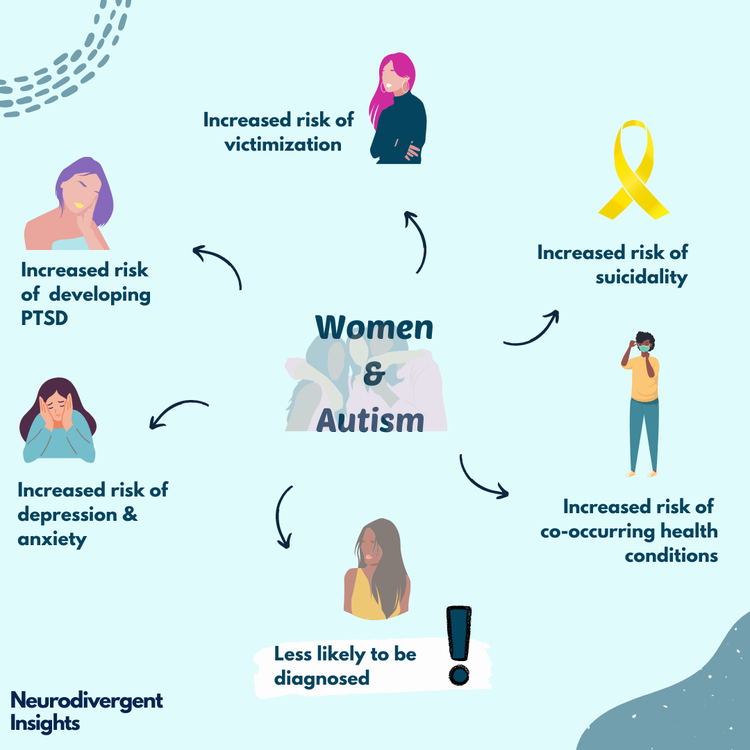Autism and Sensory Processing: Discovering the Connection and Its Impacts
Autism and Sensory Processing: Discovering the Connection and Its Impacts
Blog Article
Exploring Autism: Methods for Effective Communication and Interaction
Reliable interaction and interaction with people on the autism spectrum demand a thorough understanding of their one-of-a-kind requirements and choices. The details of these techniques reveal more considerations that warrant exploration, specifically in exactly how they can be adapted to varied contexts and individual experiences.
Understanding Autism Spectrum Problem
Autism Spectrum Problem (ASD) incorporates a variety of neurodevelopmental conditions characterized by difficulties in social communication, communication, and recurring behaviors. The term "range" reflects the varied symptoms and differing degrees of intensity experienced by people with ASD. While some may exhibit considerable problems, others may show high-functioning characteristics, permitting higher independence in day-to-day live.
The onset of ASD typically happens in very early childhood, with indicators commonly recognizable by age two. Very early indications may include postponed speech advancement, restricted eye call, and difficulties in comprehending social signs. The precise etiology of ASD remains unclear, research suggests a combination of hereditary and environmental aspects plays a crucial role in its advancement.
Individuals with ASD commonly have special toughness, such as enhanced focus to detail and phenomenal memory abilities. Nonetheless, they may battle with comprehending abstract ideas and managing changes to routine. Consequently, treatments and support tailored to individual demands are vital for promoting communication and social skills. Acknowledging the complexity of ASD is important for promoting recognition, approval, and effective strategies that facilitate purposeful communications with individuals on the range.

Relevance of Clear Interaction
Reliable interaction is crucial for promoting understanding and connection, particularly for individuals with Autism Spectrum Disorder (ASD) Clear interaction not just promotes social communications however also boosts the individual's ability to express their demands, emotions, and ideas. For people with ASD, the nuances of language can typically be challenging; for that reason, using uncomplicated and unambiguous language is vital.
Furthermore, clear communication aids reduce aggravation and anxiousness that might arise from misconceptions. When messages are conveyed in a direct and regular way, people with ASD are better equipped to translate info accurately, which can dramatically improve their social involvement and involvement in numerous settings.
Developing routines and making use of visual assistances can further boost clear communication. These methods offer people with predictable structures that help understanding and retention of info. In addition, actively being and paying attention client during communications promotes a helpful setting where individuals with ASD really feel valued and recognized.
Ultimately, prioritizing clear interaction not only equips people with ASD yet also cultivates even more significant links with their peers, caregivers, and the bigger community, leading the way for collective connections and comprehensive communications. - autism
Non-Verbal Interaction Strategies
Communication extends beyond words, and for individuals with Autism Spectrum Condition (ASD), non-verbal hints play a substantial role in communications. Non-verbal communication strategies can consist of facial expressions, motions, body movement, and eye get in touch with, all of which offer as vital components for sharing emotions and intents.
Recognizing and analyzing these non-verbal signals can enhance communications with people with ASD. A warm smile or open posture can develop an inviting atmosphere, motivating involvement. Making use of aesthetic aids-- anonymous such as picture cards or symbols-- can link interaction gaps and help share messages much more efficiently.
It is also essential to be conscious of individual area, as individuals with ASD might have various convenience degrees pertaining to distance. Observing their reactions to physical distance can notify appropriate changes.

Developing Helpful Environments
Creating a supportive setting is important for promoting positive communications and boosting the wellness of individuals with Autism Range Disorder (ASD) Such environments can significantly decrease anxiousness and produce a feeling of safety and security, enabling individuals to reveal themselves a lot more freely.
To attain this, it is important to take into consideration sensory sensitivities that individuals with ASD might experience. Changing the physical area to include soft lights, minimal history noise, and comfy seating can develop a calming ambience. Furthermore, making use of constant regimens and clear visual routines can help people anticipate transitions and minimize uncertainty, more promoting convenience.
Social spaces must be structured to reduce frustrating stimuli while providing possibilities for interaction in recommended activities. Facilitating locations marked for peaceful time can additionally function as a sanctuary throughout moments of address stress and anxiety. Significantly, including aspects of selection equips individuals, allowing them to exercise firm in their atmosphere.

Encouraging Social Communications
Promoting social communications among people with Autism Spectrum Problem (ASD) calls for intentional approaches that prioritize convenience and interaction. Developing predictable regimens can help in reducing stress and anxiety, making social setups much more friendly. Creating organized settings with defined duties and obligations permits individuals to involve without the overwhelming pressure of unstructured social characteristics.
Integrating passions and strengths right into social tasks can act as a stimulant for interaction. Organizing team tasks around shared hobbies or subjects of fascination can assist in all-natural discussions and connections. In addition, utilizing visual supports, such as social scripts or pictorial routines, can aid in comprehending social signs and expectations.
Modeling suitable social habits is vital - autism. Peers and grownups must show reliable interaction techniques, including active listening and turn-taking. Role-playing scenarios can additionally provide a safe space for individuals to practice these skills
Lastly, fostering peer connections with inclusive methods is essential. Encouraging inclusive playdates or team getaways can develop possibilities for socializing in a comfy setup. By implementing these methods, caregivers and teachers can dramatically improve social interactions for individuals with ASD, promoting their overall social advancement and wellness.
Final Thought
To conclude, effective communication and interaction techniques are necessary for supporting people with Autism Spectrum Disorder. Highlighting clear language, incorporating non-verbal signs, and establishing foreseeable routines considerably enhance involvement and decrease anxiousness. Producing encouraging atmospheres fosters safe social communications, while encouraging shared passions assists in meaningful links. Ultimately, these approaches equip people with autism to navigate social landscapes, promoting their total wellness and go to the website enabling the growth of long lasting relationships.
Effective communication and interaction with individuals on the autism spectrum necessitate a detailed understanding of their one-of-a-kind needs and preferences. Clear communication not only facilitates social interactions but likewise boosts the person's capacity to express their thoughts, emotions, and needs.Fostering social communications among people with Autism Range Condition (ASD) needs deliberate approaches that focus on convenience and interaction. By executing these caregivers, approaches and instructors can considerably enhance social communications for people with ASD, advertising their general social development and well-being.
In verdict, efficient communication and interaction approaches are crucial for sustaining individuals with Autism Spectrum Condition.
Report this page